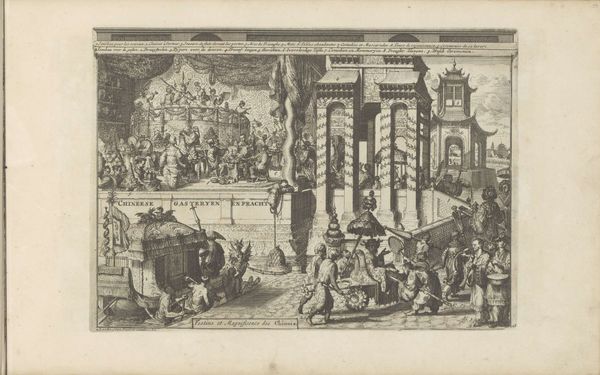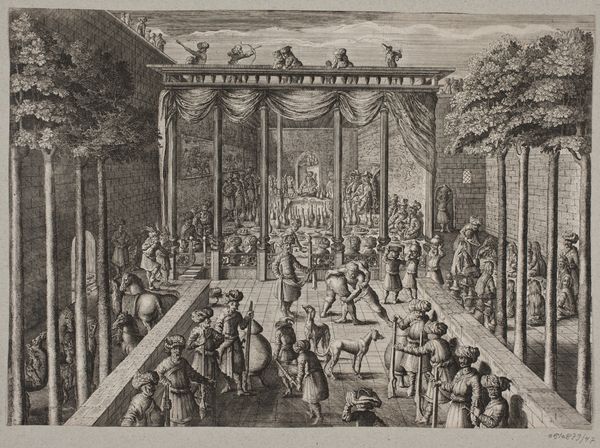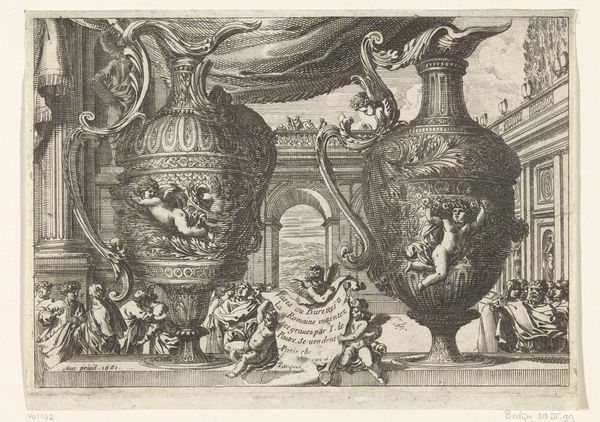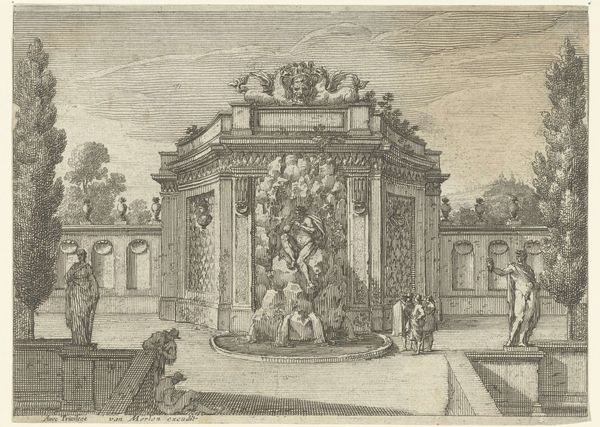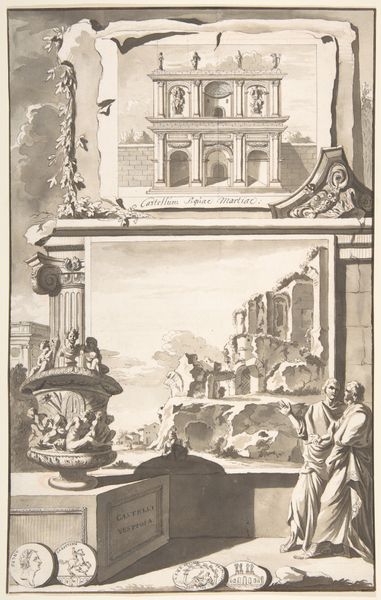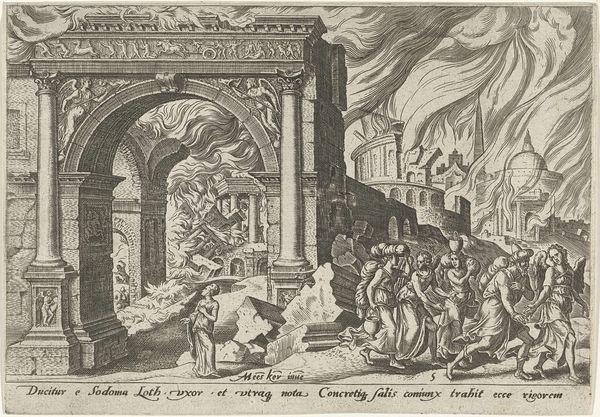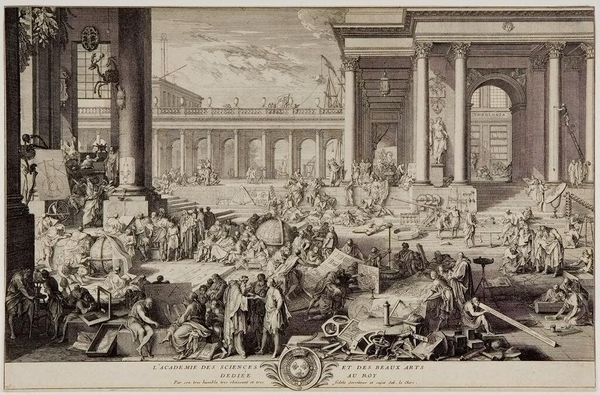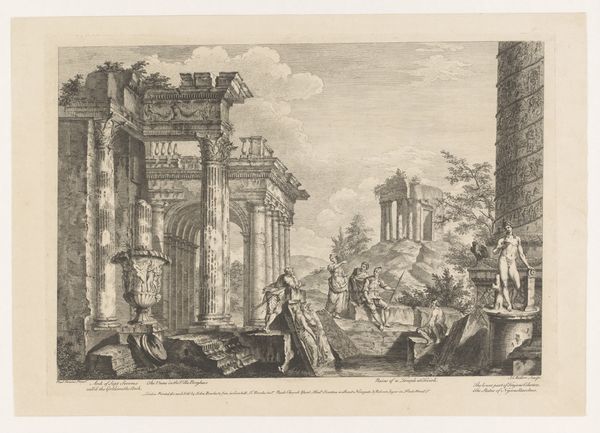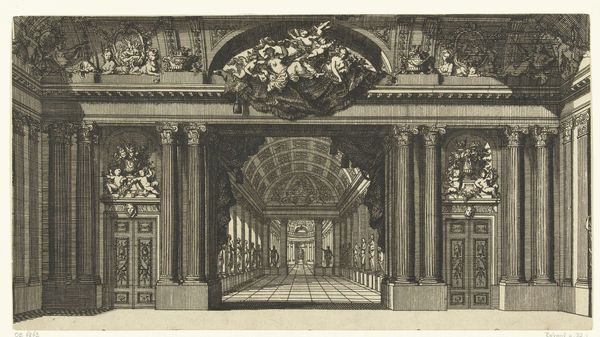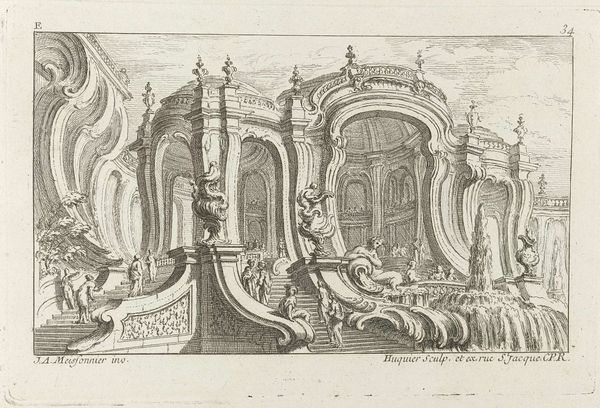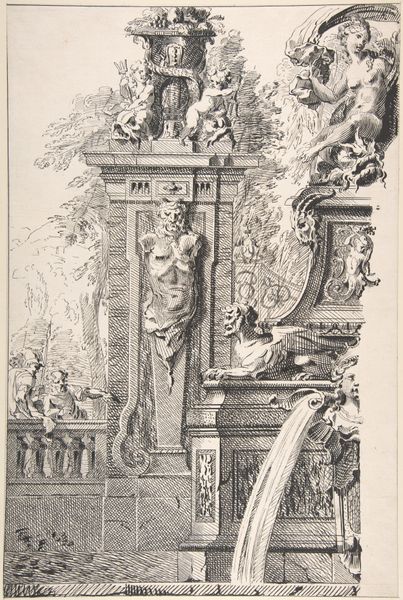
drawing, print, etching, paper, engraving
#
portrait
#
drawing
#
narrative-art
#
baroque
# print
#
etching
#
landscape
#
etching
#
paper
#
history-painting
#
academic-art
#
engraving
Dimensions: 217 × 308 mm (image); 228 × 313 mm (plate); 228 × 315 mm (sheet)
Copyright: Public Domain
Curator: Here we have an etching titled "Adoration of the Magi," by Henri Mauperché. Editor: There's a definite grandiosity in the image—an imposing architectural space rendered in incredibly fine lines. I’m drawn to the labor of its creation. The texture on this paper comes alive, like a tapestry! Curator: The academic art style, combined with the use of printmaking techniques such as etching and engraving, creates an intriguing visual language, wouldn’t you say? Editor: Absolutely! Considering printmaking, particularly etching, offered a reproductive means for disseminating religious and historical narratives... This would have enabled a wider audience to engage with its ideology through repeated imagery. It makes you think about the printing press. Curator: The composition guides our eye directly through the narrative: figures ascend a grand staircase toward the Virgin and Child. Editor: Right, and this narrative is embedded within such architectural space! You think about how it could have represented the ambitions or political landscape Mauperché's era. It's as much about the setting and its construction as the scene. Curator: Indeed. The play of light, achieved through hatching and cross-hatching, creates a dynamic surface and guides the viewer’s eye through this complex scene. What strikes you most about his technique? Editor: Well, considering Mauperche’s access to advanced skills, tools, and the social networks inherent to art making in Paris – that labour would have been essential to building the very kind of spectacle displayed in "Adoration of the Magi". Curator: Examining this etching has been enlightening. We see how artistic choices are intricately linked to broader contexts, enhancing our engagement with this enduring theme. Editor: Precisely, seeing the "Adoration" beyond the narrative alone opens our minds to consider art as a social endeavor with wider material implications.
Comments
No comments
Be the first to comment and join the conversation on the ultimate creative platform.

